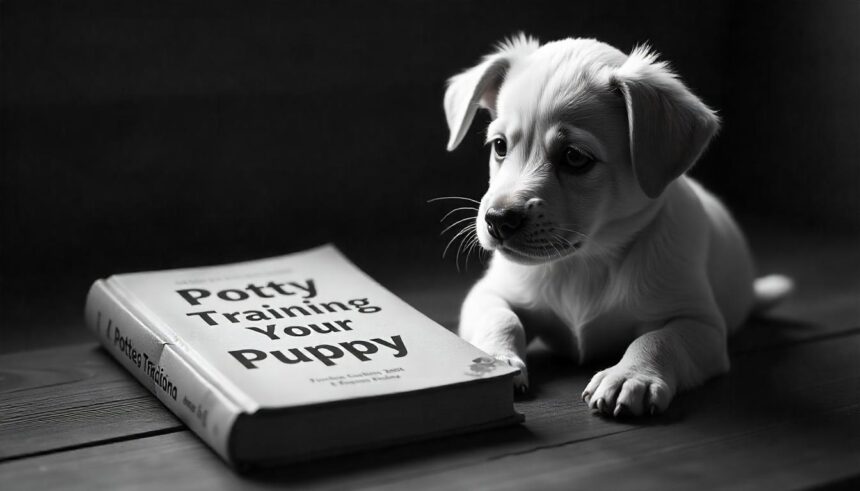Potty training a puppy is one of the first challenges new dog owners face. It requires patience, consistency, and the right approach. With the right strategy, your puppy will quickly learn where to go, minimizing accidents and creating a positive habit. This guide will walk you through proven methods, common mistakes to avoid, and expert tips to help you successfully potty train your puppy.
1. Establish a Routine
One of the most important aspects of potty training is establishing a routine. Puppies thrive on consistency, so set specific times for feeding, playtime, and bathroom breaks. Here’s a basic schedule to follow:
- Morning: Take your puppy outside as soon as they wake up. The first few minutes after waking up are the most critical for a potty break.
- After Meals: Wait about 15-30 minutes after feeding your puppy, as digestion stimulates the need to go outside.
- After Playtime: Playtime often gets puppies excited, and they may need to relieve themselves after being active.
- Before Bed: Make sure your puppy has one last potty break before bedtime to avoid accidents overnight.
2. Choose the Right Spot
Designate a specific spot in your yard or outside area where you want your puppy to relieve themselves. This helps your puppy associate that spot with bathroom time. Take your puppy to the same spot every time to reinforce the behavior. The scent will also encourage them to go there again.
3. Positive Reinforcement
Positive reinforcement is key to teaching your puppy good habits. Whenever your puppy does their business outside, reward them immediately with praise, treats, or both. This helps your puppy understand that going outside is the right behavior. Be enthusiastic with your praise, and keep the rewards consistent.
4. Supervise and Contain
When your puppy is inside, supervision is crucial. Keep an eye on them to watch for signs that they need to go out, such as sniffing the ground, circling, or heading toward the door. If you catch them in the act of having an accident, immediately take them outside to their designated potty spot and praise them if they finish there.
If you can’t supervise your puppy directly, consider confining them to a crate or a small room. Puppies generally avoid soiling their sleeping area, so a crate can be an excellent tool for preventing accidents. Just be sure not to leave your puppy in the crate for too long—puppies need frequent breaks.
5. Accidents Happen: Stay Calm
Even with the best efforts, accidents will happen during the potty training process. It’s important to stay calm and not punish your puppy. Scolding them after an accident won’t help and could cause fear or confusion. Instead, clean up the mess thoroughly to remove any lingering scent that might attract your puppy to go there again.
Use an enzymatic cleaner to remove odors completely. Avoid ammonia-based cleaners, as they can mimic the scent of urine and encourage your puppy to go there again.
6. Common Mistakes to Avoid
- Inconsistent Schedule: Skipping potty breaks or not sticking to a consistent routine can confuse your puppy and prolong the training process.
- Punishing After an Accident: Scolding a puppy after the fact doesn’t help them understand what they did wrong. Focus on positive reinforcement instead.
- Not Giving Enough Potty Breaks: Puppies have small bladders and need frequent breaks, especially during the first few months. Don’t assume they can hold it for long periods just because they slept through the night.
- Not Watching for Signs: If you’re not paying attention to your puppy’s behavior, you might miss signals that they need to go outside.
7. Tips from Experts
- Patience is Key: Every puppy learns at their own pace. Some may take a little longer than others to get the hang of potty training. Stay patient and consistent, and your puppy will get there.
- Use a Crate Wisely: Crate training is not just for preventing accidents. It can also help teach your puppy to hold their bladder for longer periods. Just be sure to provide plenty of opportunities for potty breaks.
- Stay Calm During Setbacks: If your puppy regresses or has more accidents than expected, don’t panic. Potty training can be a gradual process, and setbacks are part of the journey.
8. When to Seek Help
If you’re struggling with potty training and your puppy is older than six months without showing significant progress, it may be a good idea to consult a professional dog trainer. There may be behavioral or medical issues at play that require expert attention.
Conclusion
Potty training a puppy is a process that requires consistency, patience, and a clear strategy. By setting a routine, supervising your puppy, reinforcing positive behavior, and avoiding common mistakes, you can successfully teach your pup where to go. Keep in mind that each puppy learns at their own pace, so stay positive and persistent, and soon you’ll have a well-trained dog who knows exactly where to go when nature calls!







